New Delhi: Tensions between India and Pakistan are at an all-time high. The Balakot airstrike has just taken place. And then, Indian Air Force officers break into an impromptu dance. At least that’s how director Siddharth Anand sees his squadron leaders Deepika Padukone and Hrithik Roshan in Fighter, released on 25 January 2024. They find the time to wear their sexiest outfits, clink glasses, and shake a leg to Sher Khul Gaye. Because, nothing says national security like a spontaneous dance decision after an airstrike. Bollywood’s attempt to cash in on nationalistic pride and patriotic fervour has ushered in the theatre of the absurd. But nobody is buying it.
Despite the prevailing nationalistic sentiment sweeping across India, military action-based movies are bombing at the box office. It seems counter-intuitive, considering the enduring fascination with armed forces and intelligence agencies among both filmmakers and the public. If anything, these themes are more relevant now than ever as war becomes normalised in Europe (Russia-Ukraine) and the Middle East (Israel-Gaza). Closer home, Pakistan and the Line of Control is a perpetual flashpoint and anxieties remain high about an aggressive China making inroads into Arunachal Pradesh. But the lack of realism, hamming on the part of actors, sub-par special effects, and stilted scripts are making audiences beat a hasty retreat. That doesn’t stop the film industry from churning out such movies.
Within the last six months alone, three Hindi movies depicting the armed forces have been released—Sam Bahadur (a biopic of Sam Manekshaw, India’s first field marshal), Tejas (starring Kangana Ranaut as wing commander Tejas Gill on a perilous mission against Islamists), and Fighter. But they all miss the mark in varying degrees. From Ranaut’s exaggerated mannerisms in Tejas to the hagiographic treatment of Manekshaw, or the laughably caricaturised Pakistani terrorist Akhtar in Fighter, Bollywood just can’t seem to get movies on the armed forces right.
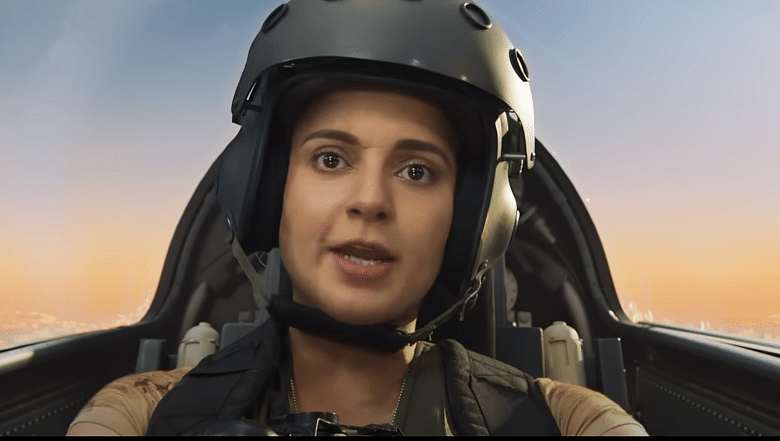
Tejas and Fighter, both featuring improbable plots strung together by melodrama, plummeted at the box office. “People hold the forces in great regard. To show certain things is sort of blasphemy for them,” said Air Vice Marshal (retd) Manmohan Bahadur.
While Sam Bahadur got mixed reviews, it was not the most nuanced or insightful representation of India’s first field marshal. Last year also saw the release of Amazon Prime Video’s Pippa (based on the Indo-Pakistan War of 1971), Gadar 2 starring Sunny Deol, and Shah Rukh Khan’s Pathan which tugged on the heartstrings of Indian patriotism. The latter two made record box office collections. But they are the exception, rather than the norm. Gadar 2 relied heavily on nostalgia while Pathan was Shah Rukh Khan flexing his stardom.
These films always say they have an adviser from the forces. I wonder what advice they are giving, because the research seems flawed
-Air Vice Marshal (retd) Manmohan Bahadur
It’s not like the Hindi film industry isn’t venturing into uncharted territory. Hollywood has been raking in billions of dollars while riding on the coattails of the US armed forces with movies like Top Gun and Saving Private Ryan, or iterations of events like Pearl Harbour, World War II, D-Day, and even 9/11. Top Gun in fact was recruitment gold for the US Navy. Military recruiting booths were set up outside theatres, according to Alissa Wilkinson who explores the relationship between Hollywood and the US armed forces for Vox.
“In exchange for the enlistment bounce, and a sexy, exciting perspective on the pilot’s life being presented to the general public, the military lent considerable aid to the production, from locations and equipment to personnel. Producer Jerry Bruckheimer has said that Top Gun would not have been made without the military’s assistance,” she wrote.
This doesn’t happen here. It’s not just poor plots that Hindi war movies suffer from. There’s an obvious lack of knowledge about the functioning of the military.
“Indian war movies are extremely exaggerated, highly emotional and also suffer from lack of funds and active participation from the armed forces,” said Lt Gen (retd) H S Panag.
Also Read: Aditya Dhar’s ‘Article 370’ wins over Kashmir Files, Kerala Story. Focuses on entertainment
Big budgets and jingoism
Siddharth Anand made Fighter, a movie on elite Air Force pilots, with a budget of Rs 250 crore and unashamedly borrowed heavily from Tom Cruise’s Top Gun: Maverick (2022). A sneak preview with stunning aerial dogfight sequences created plenty of buzz online. But nothing could save the movie— not its big budget nor its hyper jingoism.
Kangana Ranaut’s Tejas bombed even more spectacularly, and ran to near empty theatres across the country. In Fighter, the villain Azhar Akhtar (played by Rishabh Sawnhney), with his kohl-rimmed eyes and penchant for hurling bombs and spouting hackneyed Urdu, came across as more comedic than sinister.
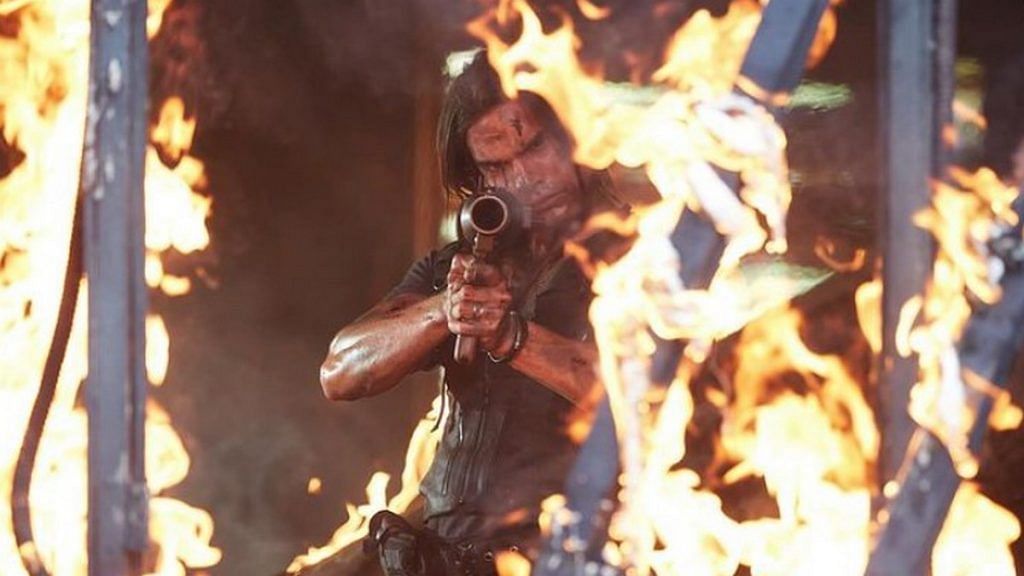
Then, there are dialogues that make a mockery of tragic incidents. “Bomb blast, 26/11 and now, Pulwama. In the last 50 years, no government has responded to their antics. But enough is enough. We have to show baap kaun hai (who’s the daddy),” says the prime minister, played by Harish Khatri, in Fighter.
Ranaut is a vocal supporter of the dispensation in power, and Fighter has plenty of pro- government dialogues, but the frosty response suggests that audiences want more than fireworks and bootlicking when they pay for a ticket.
Tejas, which cost Rs 70 crore to make, is staring at a Rs 50 crore loss. It even failed to tug at the heartstrings of homesick NRIs, earning only Rs 70 lakh in the international market.
Pippa is a movie which depicts an operation I was a part of, and again, it’s extremely exaggerated. The only movie that stayed true to reality and the war according to me is Tango Charlie [2005], which again depicts the BSF
– Lt Gen (retd) H S Panag
“These films always say they have an adviser from the forces. I wonder what advice they are giving, because the research seems flawed,” said Bahadur.
The derivative Fighter, too, is a lesson in how not to make a movie on the armed forces, with what trade analyst Komal Nahata has described as badly scripted “Pakistan-bashing”. While aiming to follow in the footsteps of Gadar 2, he further pointed out, it lacks the same emotional resonance and originality.
“The bombing of both Tejas and Fighter at the box office indicates that there is a fatigue for war movies, especially those that villainise neighbouring countries,” said trade analyst Taran Adarsh
Such travesties could be avoided if India’s armed forces and intelligence agencies establish formal liaisons to interface with the entertainment industry. In the United States, government agencies have a decades-long history working with producers and directors across film, television, and even radio to improve their image.
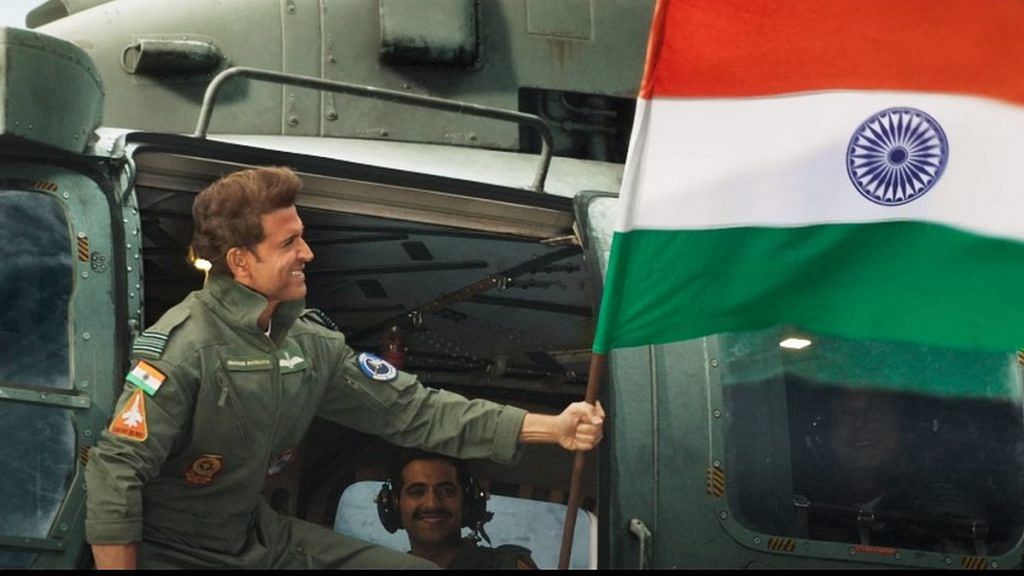
The Federal Bureau of Investigation (FBI) established such an office in the 1930s to spruce up its image on shows and movies like G-Men (1935), The FBI Story (1959), and The F.B.I.(1965–1974). In 1947, the Department of Defense followed suit. Now, it’s par for the course—the army, the navy, the air force, the Marine Corps, the coast guard, and the Secret Service—all have motion picture and television offices or official assistants, writes Tricia Jenkins in her book The CIA in Hollywood: How the Agency Shapes Film and Television.
Panag gave the example of Pippa, Amazon Prime Video’s offering in this genre, as an example of how Indian filmmakers tend to go over-the-top. Starring Ishaan Khattar and Mrunal Thakur, it is based on the life of Captain Balram Singh Mehta of India’s 45 Cavalry regiment, who along with his siblings, fought on the eastern front during the Indo-Pakistan War of 1971.
“Pippa is a movie which depicts an operation I was a part of, and again, it’s extremely exaggerated. The only movie that stayed true to reality and the war according to me is Tango Charlie [2005], which again depicts the BSF, and not the Army per se,” Panag says.
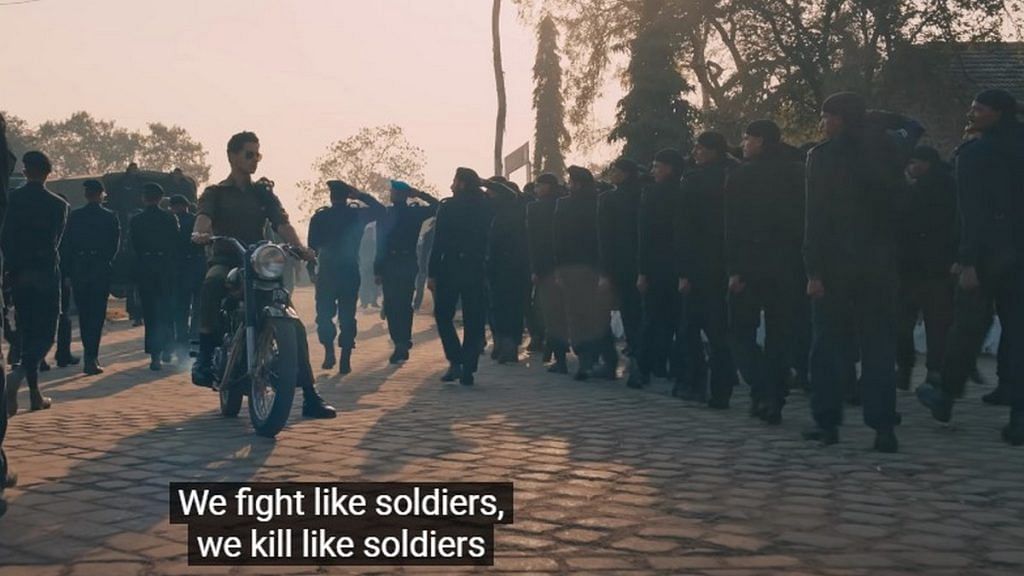
Biopics missing the target
Biopics are a tricky business, where directors and scriptwriters have to walk the fine line between myth and reality. Panag calls it the “halo effect”. Meghna Gulzar, who earlier hit the jackpot with the spy thriller Raazi, failed to recreate the magic with Sam Bahadur, despite a knockout performance by Vicky Kaushal. It clashed at the box office with Sandeep Reddy’s wildly polarising Animal—and lost.
“The film is painfully conscious that its central figure was a giant among men. It declares that he was great, and expects us to believe it because it says so, but fails to distil the essence of who he was and why,” writes veteran film critic Anna M Vetticad in her review.
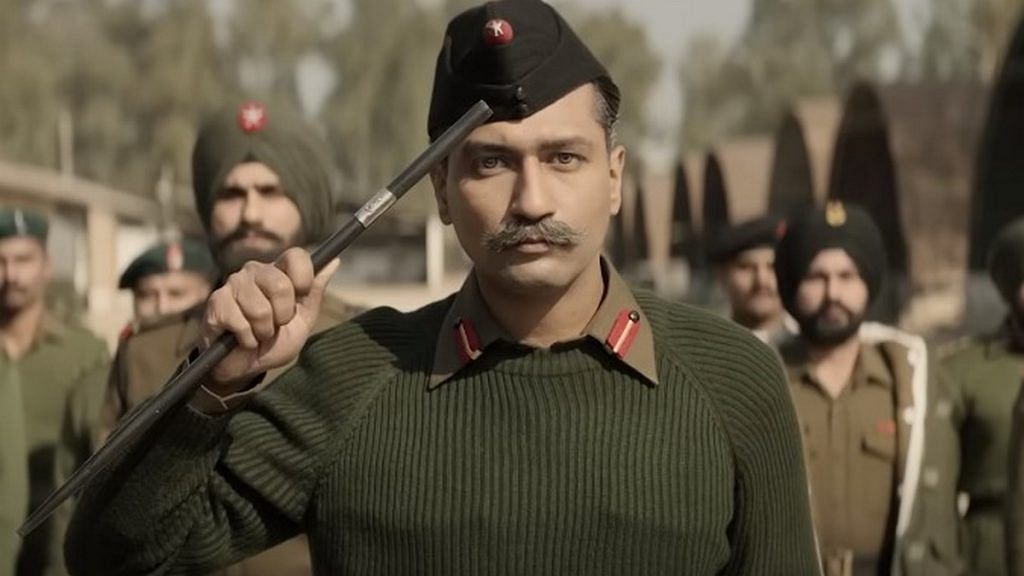
More often than not, filmmakers prefer to err on the side of caution when making films on India’s military heroes or real-life conflict. Not doing so can come with repercussions. Karan Johar’s Gunjan Saxena: The Kargil Girl (2020) landed in controversy with the fictionalisation of certain details. The film depicted Gunjan Saxena as the first woman pilot to fly sorties during the 1999 Kargil conflict, a detail vehemently disputed by Indian Air Force officers. The controversy brought forth the pitfalls of cinematic liberties, demonstrating how blending reality and fiction doesn’t always guarantee a positive impact or deliver the intended message.
One of the few biopics that managed to rake in both favourable reviews and money was Shershaah (2021), produced by Johar. Based on the life and love story of Captain Vikram Batra (played by Siddharth Malhotra), it chronicles the journey of a young army captain who lost his life in the Kargil war, and left behind a grieving family and fiancé Dimple (Kiara Advani) who never married again.
There is a fatigue for war movies, especially those that villainise neighbouring countries
– trade analyst Taran Adarsh
Shershaah which did not fall prey to over-the-top plots, appealed to everyone. The viral success of songs like Teri Meri Gallan worked in its favour as well. It became the most watched movie on OTT in 2021 on Amazon Prime Video. But as with all OTT releases, there’s no answer to whether it would have made money had it been released in theatres.
Another stand-out film is Meghna Gulzar’s Raazi, one of the rare Indian war films to be directed by a woman. Set during the 1971 India-Pakistan war, It brought sensitivity and poignancy to a genre bursting with machismo and one-dimensional villains. Sehmat (Alia Bhatt) is a spy who brims with patriotism, but also loves her supportive husband Iqbal (Vicky Kaushal), a member of the Pakistan armed forces. What Gulzar shows is not just love for one’s country, but how the lives of soldiers can impact the people they care about.
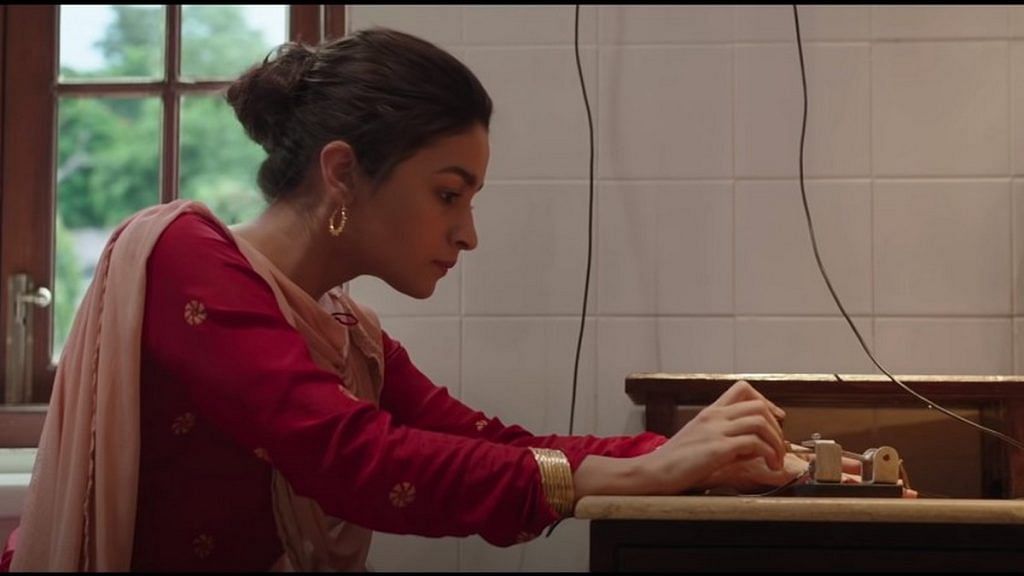
Made on a modest budget of Rs 40 crore, Raazi earned more than Rs 200 crore worldwide. And it also showed that glitz and glamour are not necessary ingredients for a movie on the armed forces.
While purely fictional war- and espionage-themed blockbusters like Pathan and Gadar 2 have performed well at the box office, others that purport to be “based on real events”, or some glorified version thereof, have been getting limited traction in theatres. Many of them seem to be neither here nor there.
Even Aditya Dhar’s Uri: The Surgical Strike incorporated several unrealistic elements. For instance, a scene where Major Vihaan Singh Shergill (Vicky Kaushal) arbitrarily assigns an Air Force pilot (Yami Gautam) to his team, saying, “I want you to be my pilot Seerat”, deviates from real-world protocols. It’s pure masala and fiction.
Although Uri achieved success, factors like its release timing coinciding with the anniversary of the Pulwama attack and the 2019 Lok Sabha elections, along with elements of jingoism, histrionics, and popular dialogues like “Yeh naya Hindustan hai (This is a new India)?” likely contributed significantly.
Also Read: Books on Modi era are the new rage. Publishers race to keep up with the churn in India
‘Vijeta’ to ‘Border’—classics that hit the target
Perhaps Bollywood should look back to the past to see how to get military and war films right. Govind Nihalani’s Vijeta (1982), for instance, is a classic that tells the story of Angad (Kunal Kapoor), a young Sikh cadet who joins the Air Force and forges his own path. The movie approaches the Air Force not from a lens of patriotic glorification, but as a career choice with its own set of rewards and challenges.
“It is the best film to be made on the Indian Air Force,” declared Bahadur. “It had a plot, and it showed what cadet life actually looks like.”
The film subtly showcases unity and patriotism in its portrayal of cadet life through a gallery of characters from different communities, states, and religions, steering clear of hyper-masculine displays and jingoism. Even the love story between Anna (Supriya Pathak) and Angad is realistic as they negotiate their cultural differences.
Vijeta stands out also for its impressive performances from the most minor of characters, dialogues, and visuals, including rare aerial photography featuring combat aircraft of the IAF in the 1980s, including MIG-21Bs.
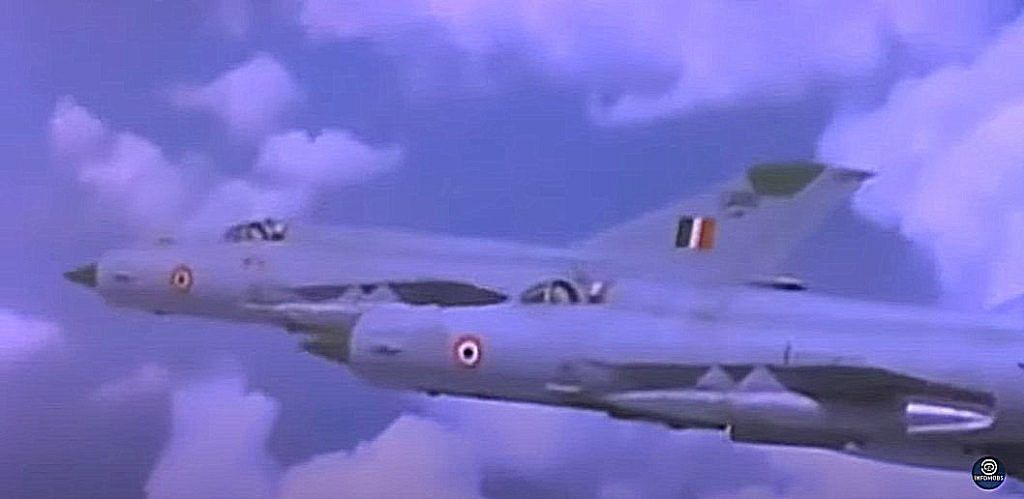
Much of the movie was shot at Pune, and the IAF’s No.4 Squadron, also called the ‘Oorials’, provided both pilots and planes for the aerial sequences.
Another significant milestone, also set against the background of the 1971 war, was JP Dutta’s magnum opus Border (1997). The film brought together the Air Force, Army, and BSF to show what life looks like on the frontlines. A grim take on the realities of war, loss of life, and the horrors of combat, Border struck a chord not just during its release but also when the Kargil War broke out in 1999, when its songs Sandeshe Aate Hai and Toh Chaloon regularly played on radios. The film achieved a lifetime collection of Rs 39.46 crore.
Dutta’s success prompted a slew of war movies. However, his next outing, LOC Kargil (2003) bombed spectacularly at the box office, with critics also panning it for its four-hour runtime and lack of coherent plotting. The following year, Farhan Akhtar came out with Lakshya (2004), which flopped although it has since acquired cult status. Taking a unique urban perspective on joining the Army, it tells the story of Karan Shergill (Hrithik Roshan) who enlists on a whim, then quits, but eventually ends up becoming the best cadet of his batch.
Movies on the armed forces have a wealth to explore—they can tell nuanced stories about the women and men in uniform, the complexities of war and protecting the borders, the politics of combat, and more. It’s about time we get it right.
In a famous dialogue from Uri: The Surgical Strike, Vicky Kaushal’s character rallies his troops with the question, “How’s the josh?” They respond with a resounding “High, Sir!” But if the same question were posed to audiences about today’s military movies, the response might be the opposite.



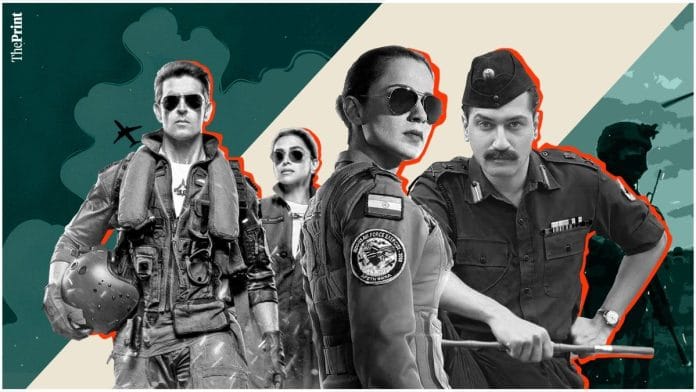



Sam Bahadur did an excellent job in visualising parts of the life of late Field Marshal and is free from excessive masala. A great effort has been put in it’s making everything from costume to acting and singing
This movie cannot be categorised along with Fighter or Pathaan
This movie has a lot of details and is encouraging and right path for military films in future
Wished the article never ended.